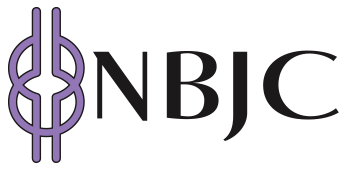
Children Living in LGBT Families of Color Face Double Jeopardy
 WASHINGTON, D.C. — A new report released today shows how children living in lesbian, gay, bisexual and transgender (LGBT) families of color have become collateral damage of antiquated laws, social stigma, and discrimination.
WASHINGTON, D.C. — A new report released today shows how children living in lesbian, gay, bisexual and transgender (LGBT) families of color have become collateral damage of antiquated laws, social stigma, and discrimination.
LGBT Families of Color: Facts at a Glance offers a snapshot of how racial and ethnic discrimination, anti-LGBT social stigma and outdated family laws intersect to hurt children living in LGBT families of color. Driven by the need to shed light on the double jeopardy faced by these children and families, the report brings together acoalition of public policy and family advocacy organizations: The National Black Justice Coalition, National Queer Asian Pacific Islander Alliance, UNID@S, the Fighting Injustice to Reach Equality (FIRE) initiative, the Family Equality Council, the Movement Advancement Project and the Center for American Progress.
LGBT Families of Color: Facts at a Glance is available online at www.children-matter.org.
LGBT PEOPLE OF COLOR ARE MORE LIKELY TO PARENT
“Contrary to popular stereotypes, both black and Latino gay and lesbian couples are morelikely to raise children than their white counterparts,” said Sharon Lettman-Hicks, executive director and CEO of the National Black Justice Coalition. “Gay and lesbian couples of color are also more likely to become foster parents.”
The report finds that:
- LGBT families are more racially and ethnically diverse than families headed by married heterosexual couples. Of same-sex couples with children, 41% are people of color, compared to 34% of married different-sex couples with children.
- LGBT families of color face greater poverty. For example, 32% of children raised by black same-sex couples live in poverty, compared to 13% of children raised by black married different-sex couples and 7% of children raised by white married different-sex couples.
CHILDREN RAISED IN LGBT FAMILIES OF COLORCONFRONT A DUAL BURDEN OF SOCIAL STIGMA AND DISCRIMINATION
“Asian/Pacific Islander and Latino families are disproportionately foreign-born,” said Ben de Guzman, from the National Queer Asian Pacific Islander Alliance. “Children in these LGBT families of color face the triple burden of race-based discrimination,homophobia, and xenophobia. LGBT families where the parents or children areimmigrants are particularly vulnerable.”
Children being raised in LGBT families ofcolor also face:
- Decreased access to health insurance. While 74% of white workers receive health insurance coverage through work, only 42% of Latino workers, 50% of black workers, and 69% of Asian/Pacific Islander workers receive such coverage through their employers. LGBT families also face reduced access because most employers are not required to cover either the same-sex partners of their workers or that partner’s children.
- Bullying and harassment impeding their ability to learn. Children may be bullied or harassed based on their own race, ethnicity, sexual orientation or gender identity—or that of their parents. For example, a survey of LGBT parents and their school-age children found that 40% of students with LGBT parents reported being verbally harassed because of their families, and 43% of students of color with LGBT parents said that they had experienced harassment because of their race and ethnicity.
“In addition to racial/ethnic stereotypes and discrimination, LGBT families of color also face invisibility within the broader communities to which they belong and may have difficulty accessing appropriate services,” said Lisbeth Melendez Rivera, executive director of UNID@S. “For instance, LGBT organizations are often based in LGBT neighborhoods, but many Latina/o LGBT families do not live in these areas. On the other hand, Latina/o organizations may not have created safe spaces for LGBT families.”
COMMON-SENSE SOLUTIONS
LGBT Families of Color: Facts at a Glance is a companion to the All Children Matter: How Legal and Social Inequalities Hurt LGBT Families report released in October 2011. It summarizes 12 common-sense legal, policy and cultural solutions that, taken together, could virtually eliminate the legal inequities that hurt children living in LGBT families of color. Some of those solutions include:
- Legally recognizing LGBT families of color via parental recognition laws at the state level; marriage for gay and lesbian couples; and pathways to immigration and citizenship for binational and immigrant LGBT families.
- Providing LGBT families of color with equal access to government-based economic protections such as safety net programs. Consistent, broad definitions of family within these programs should include domestic partners and other de facto parents.
- Providing LGBT families of color and their children with equal access to health care and health insurance, as well as medical decision-making ability.
- Protecting LGBT families of color and their children with non-discrimination laws and anti-bullying policies.
- Provide LGBT families of color with accessible and culturally competent programs, services and support.
ABOUT THE REPORT PARTNERS AND CO-AUTHORS
The National Black Justice Coalition(NBJC) is a civil rights organization dedicated to empowering Black lesbian, gay, bisexual, and transgender people. NBJC’s mission is to end racism andhomophobia. Learn more at www.nbjc.org.
The National Queer Asian Pacific Islander Alliance is a federation of LGBTQ Asian American, South Asian, Southeast Asian and Pacific Islander organizations seeking to build the capacity of local LGBT AAPI organizations, invigorate grassroots organizing, develop leadership, and challenge homophobia, racism, and anti-immigrant bias. Learn more at www.nqapia.org.
The mission of Unid@s, the National Latina/oLesbian, Gay, Bisexual & Transgender Human Rights Organization is to create a multi-issue approach for advocacy, education and convening of and for ourcommunities. Guided by economic justice, feminist, environmental and pro-peace values, UNID@S joins a global effort to transform systems and policies to create the just and equitable world we know possible. Learn more at www.unidoslgbt.com.
Founded in 2006, the Movement Advancement Project is an independent think tank that provides rigorous research, insight and analysis that help speed equality for lesbian, gay, bisexual and transgender people. Learn more at www.lgbtmap.org.
Celebrating its 30th Anniversary, Family EqualityCouncil connects, supports, and represents the one million lesbian, gay, bisexual, and transgender parents in this country and the two million children they are raising. Learn more at www.familyequality.org.
The Center for American Progress (CAP) is a nonpartisan research and educational institute dedicated to promoting a strong, just and free America that ensures opportunity for all. The Fighting Injustice to Reach Equality Initiative (FIRE) at CAP explores the intersections of race, sexual orientation, economics, and public policy. Learn more at www.americanprogress.org
